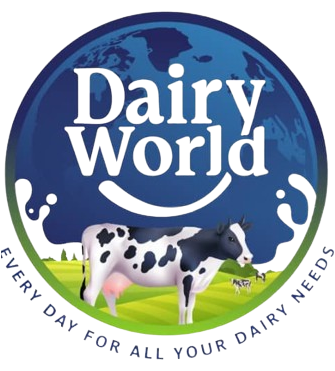Introduction
In this article, we’ll dive into whole milk powder (full-fat), exploring its features, benefits, and popular uses. You’ll discover how whole milk powder is utilized in food, bakery, confectionery, pharmaceuticals, and even animal nutrition. We’ll also highlight the key differences between whole milk powder and skimmed milk powder, helping you choose the right option for your needs. Stay with us for accurate, practical insights into these essential milk products.
What is Whole Milk Powder?
Whole milk powder, also known as full-fat milk powder, is defined by the FDA and Codex Alimentarius (CODEX) standards. It contains 26% to 40% milk fat, with moisture below 5%. The protein content in whole milk powder is typically adjusted to at least 34% in the milk solids-not-fat (MSNF) component. This powder offers all the nutrients of fresh milk in a convenient, dry form, making it a popular ingredient in food production. It’s commonly used to create reconstituted dairy products like yogurt and milk-based beverages and is a key ingredient in confectionery and bakery products, providing fat and milk solids. Whole milk powder can also be fortified with vitamins for enhanced nutritional value
Appropriate Packaging for Whole Milk Powder
Whole milk powder is packaged in multi-layer kraft bags with an inner polyethylene lining. These bags are stitched or sealed without the use of staples or metal fasteners. Additionally, the product can be packaged in cardboard containers with a plastic lining or aluminum cans.
Storage Conditions for Full-Fat Milk Powder
Whole milk powder should be stored in a cool, dry environment with a temperature below 27°C and relative humidity below 65%. It is recommended to use the product within 6 to 9 months. Note that the shelf life depends on the storage conditions, and this time frame is provided as a general guideline. Milk fat is sensitive to oxidation, and higher temperatures or extended storage periods may alter the product’s natural flavor.
Physical, Chemical, and Microbiological Characteristics of Milk Powder
| Chemical Specifications | |
| Characteristics | Values |
| Protein | 24.5% – 27.0% |
| Lactose | 36.0% – 38.5% |
| Fat | 26.0% – 40.0% |
| Ash | 5.5% – 6.5% |
| Moisture | 2.0% – 4.5% |
| Microbiological Specifications | |
| Characteristic | Values |
| Standard Plate Count | Less than 10,000 CFU/g |
| Coliform | Maximum 10/g |
| Escherichia Coli | Negative |
| Salmonella | Negative |
| Listeria | Negative |
| Staphylococcus Positive | Negative |
| Physical Specifications | |
| Characteristic | Values |
| Scorched Particles | (spray-dried): 7.5 – 15.0 mg |
| (roller-dried): 22.5 mg | |
| Titratable Acidity | Maximum 0.15% |
| Solubility Index | (spray-dried): 1.0 ml |
| (roller-dried): 15 ml | |
| Color | White to light cream |
| Flavor | Pure and pleasant dairy taste |
Common Applications of Whole Milk Powder
Whole milk powder is used in the production of various products, including bread, pastries, dairy products, ready-made mixes, sauces, and soups, serving as:
- A nutritious substitute for fresh milk that does not require refrigeration and is easy to use.
- a dairy ingredient that is easy to transport and store.
- An economical source of dairy solids, including milk fat.
Additionally, whole milk powder is widely used across various food and non-food industries in the following ways:
| Industry | Application of Whole Milk Powder |
| Food Industry
| Confectionery and Chocolate Production: Enhances flavor, texture, and moisture in candies, cakes, and chocolates. |
| Ice Cream: Creates a creamy texture and rich taste. | |
| Yogurt and Cheese: Increases dry matter, improves texture and flavor. | |
| Dairy Beverages: A base for producing flavored milks, sweetened instant coffees, and energy drinks. | |
| Soups and Sauces: Increases thickness, enhances flavor, and creates desirable texture. | |
| Infant Formula Industry | Infant Formula Formulation: A key ingredient in infant formula production due to its high nutritional value and quality preservation. |
| Bakery Industry | Bread and Bakery Products: Increases dry matter, improves texture and softness of bread, and enhances flavor and nutritional value. |
| Convenience Food Industry | Ready-to-Eat and Processed Foods: Improves nutritional value, extends shelf life, and enhances flavor in puddings, cookies, and breakfast cereals. |
| Confectionery Industry | Marzipan and Sweet Fillings: Enhances flavor, texture, and richness in the final product. |
| Pharmaceutical Industry | Nutritional and Pharmaceutical Supplements: Used due to its high protein and vitamin content. |
| Meat Products Industry | Meat Products: Improves texture, increases protein content, and stabilizes moisture in sausages and cold cuts. |
| Animal Nutrition Industry | Pet Food: Provides the necessary protein and fat for pets due to its high nutritional value. |
| Definitions
| Marzipan: A sweet and soft paste made from ground almonds, sugar or sugar syrup, and sometimes eggs or egg whites. Commonly used in the confectionery industry, marzipan is popular for covering and decorating cakes and pastries due to its smooth texture and mild almond flavor.
Sweet Fillings: Sweet fillings are ingredients used as fillings for sweets, cakes, and desserts. They can include jams, creams, chocolate, marmalade, or other mixtures. These fillings help create unique flavors and enhance the appearance and appeal of products. Common fillings include custard cream, buttercream, ganache, and marmalade.
|
Differences Between Whole Milk Powder and Skimmed Milk Powder
To understand the key differences between whole milk powder and skimmed milk powder, it is essential to take a closer look at their primary characteristics. Below, we will explore the differences in terms of fat content, calories, stability, industrial applications, and nutrient composition to help you better determine the most suitable option based on various needs.
1. Fat Content
– Whole Milk Powder: Contains 26% to 40% fat, making it a rich source of dairy fats.
– Skimmed Milk Powder: Has less than 1.5% fat, offering a low-fat alternative for those looking to reduce fat intake.
2. Caloric Value
– Whole Milk Powder: Higher in calories due to its fat content, providing more energy.
– Skimmed Milk Powder: Lower in calories, ideal for calorie-conscious consumers.
3. Stability
– Whole Milk Powder: More susceptible to oxidation due to the higher fat content, which may affect shelf life and flavor if not stored properly.
– Skimmed Milk Powder: More stable due to its low-fat content, with a longer shelf life and less risk of flavor degradation.
4. Industrial Applications
– Whole Milk Powder: Commonly used in products requiring a richer flavor and creamier texture, such as chocolates, ice creams, and full-fat dairy products.
– Skimmed Milk Powder: Preferred in applications where a lower fat content is needed, such as in low-fat dairy beverages, baked goods, and health-conscious food products.
5. Nutrient Content
– Whole Milk Powder: Retains all the nutrients of fresh milk, including fat-soluble vitamins like A, D, E, and K, alongside proteins, carbohydrates, and minerals.
– Skimmed Milk Powder: Contains similar amounts of protein, carbohydrates, and minerals but lacks the fat-soluble vitamins present in whole milk powder.
Conclusion
Whole milk powder, with a fat content of 26% to 40%, is a rich source of nutrients and ideal for producing dairy and confectionery products. In contrast, skimmed milk powder, with lower fat content, is better suited for low-fat products and has a longer shelf life. Both types of milk powder have diverse applications across various industries depending on specific needs. This article provides readers with the insights needed to make an informed choice between these two products based on their individual requirements.


